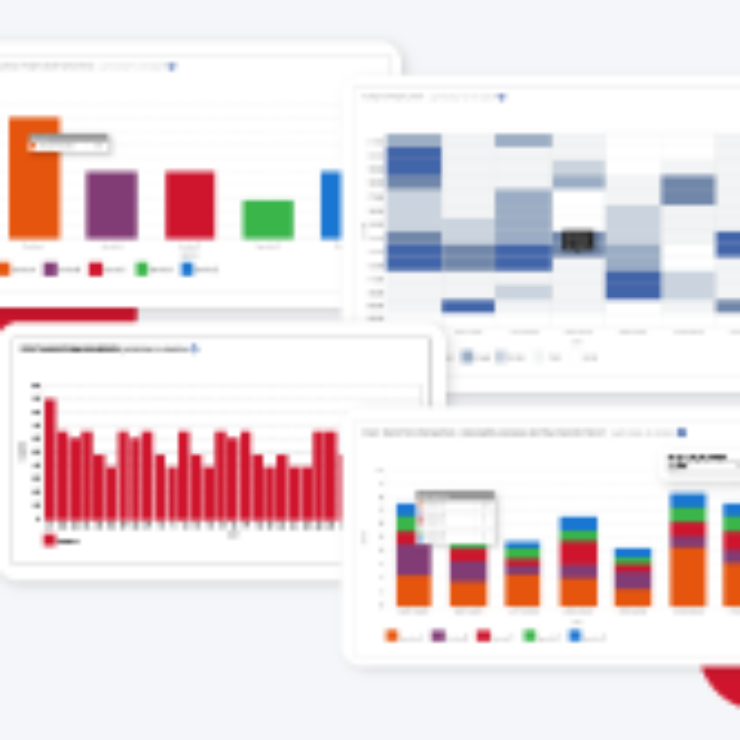
Important features to take into consideration when choosing a Queue Management System
What to consider when choosing a Queue Management System?
A Queue Management System brings a lot of value to service providers and customers.
Among other things, it can significantly improve customer experience, increase operational efficiency, and provide businesses and organizations with data to make informed decisions.
Virtual queueing solutions
The use of technology in daily life keeps increasing, and customers are used to having the convenience of managing things virtually when possible. This also applies to queue management. For customers, the level of convenience, comfort, and freedom they have with virtual queueing is incomparable to traditional queueing. Some of the things that customers can do with virtual queueing solutions:
- Wait remotely
- Checking-in virtually
- Book appointments at their preferred time
Integration of all touch points in the customer journey
Queue management is only a part of the customer journey. Your interaction with customers begins before they arrive at your premises (pre-arrival), right through to after they’ve been served (post-service). For this reason, queue management is also referred to as customer journey management. The pre-arrival touchpoint, for example, is appointment booking or virtual ticket generation. Getting customer feedback after the service, which is essential for service improvements, is also a part of the customer journey.
It’s important that you have an integrated queue management system that covers each of the touch points in the journey, so you can provide a continuous customer experience. Having a system that covers the entire journey will also give you in-depth insights into the service performance, customer behaviour and experience. This is useful for driving improvements and efficiency.
Third-party integration
Various departments within your organization have a range of systems they use in their day-to-day work. The solution needs to be able to integrate seamlessly with these systems and allow additional third-party features to be built on top if required.
Real-time monitoring
Monitoring operations in real-time is always an advantage, but it’s an essential part of any organization that provides service to customers. With real-time data in a queue management system, a branch manager can make decisions based on the current situation. For example, if the waiting time for a certain service is too long or if there are too many people in one line, they can decide to open another counter. Having this information on a real-time dashboard helps your organization to operate effectively and efficiently.
Comprehensive analytics and reports
While real-time data is important for monitoring your operation, comprehensive analytics and reports are also important to get a complete picture of your performance over time. This will also give you an overview of the peak and low periods, average wait and service times, staff performance, and customer experience.
Omnichannel solutions
Many organizations want to accommodate customers in digital and/or physical environments, especially if they deal with customers in a range of demographics. It’s important to make sure you provide a smooth customer experience for every single one. An omnichannel, integrated queue management solution is essential to make sure your service is accessible through various channels, without any gaps.
Scalability
The growth of your organization is something important to keep in mind when thinking about investing in a queue management system. As your organization grows, you might want to expand your services or increase your capacity to handle more customers and their demands. Choose a queue management solution that is scalable and can support your organization’s changes without disruption.
Centralized management
For large businesses and organizations with more than one branch, having a system with centralized management is important to monitor and control operations across all the branches. This will allow you to sustain a high-performing environment for staff, as it gives them better oversight and makes routine tasks easier. With centralized management, any changes like software installations or updates can be performed from one location (instead of having to do it in each branch), improving overall efficiency.
When it comes to data and analysis, a centralized queue management system provides the ability to streamline all the data and information from all branches. It also improves the information flow as it enables the data and information to be shared across departments. This way, decision-makers can benefit from having a complete picture of the overall business.
Ease of configuration and personalization
Each business or organization has specific requirements, and so do their customers. What fits one organization might not be the same for others, so the solution should be configurable to manage all the different requirements. This includes but is not limited to, the average number of customers served daily, the number of staff and the distribution, average serving time, and the type(s) of service you provide.
It’s also important that the user interface of the queue management system is aligned with your brand’s identity. So having a system that is easy to customize is a definite plus.




